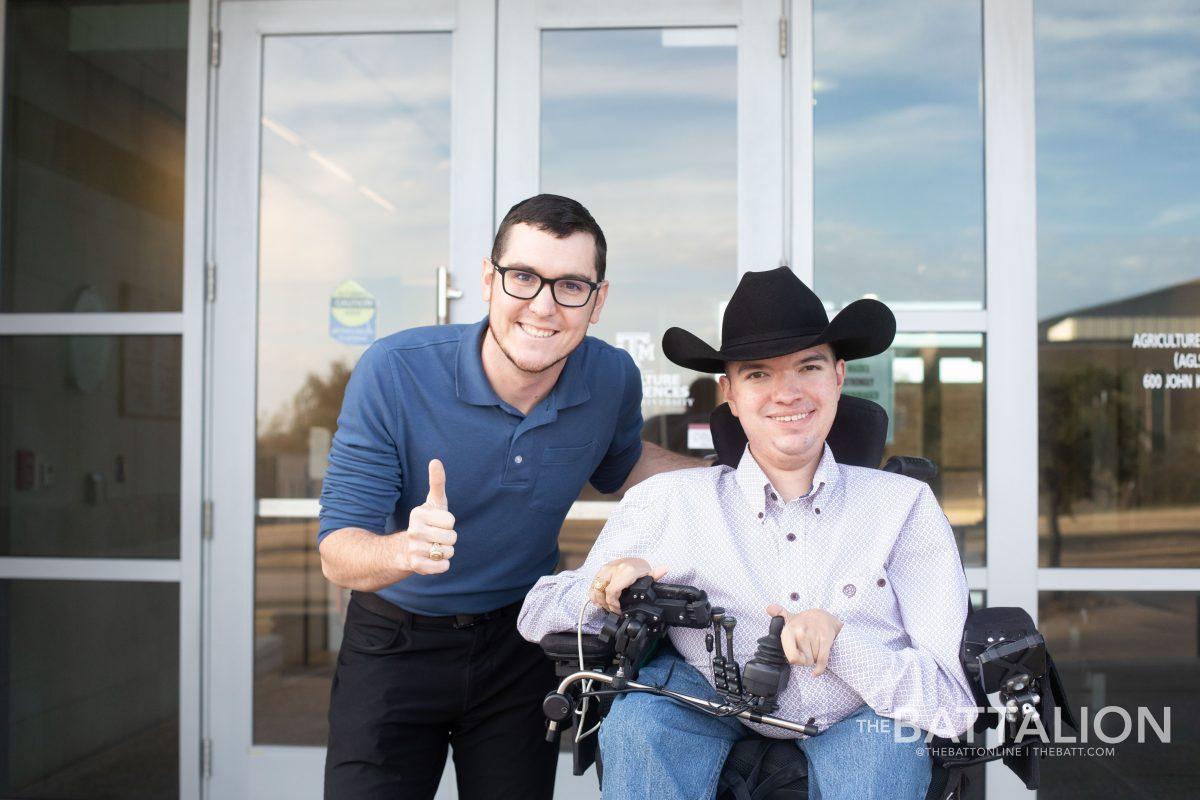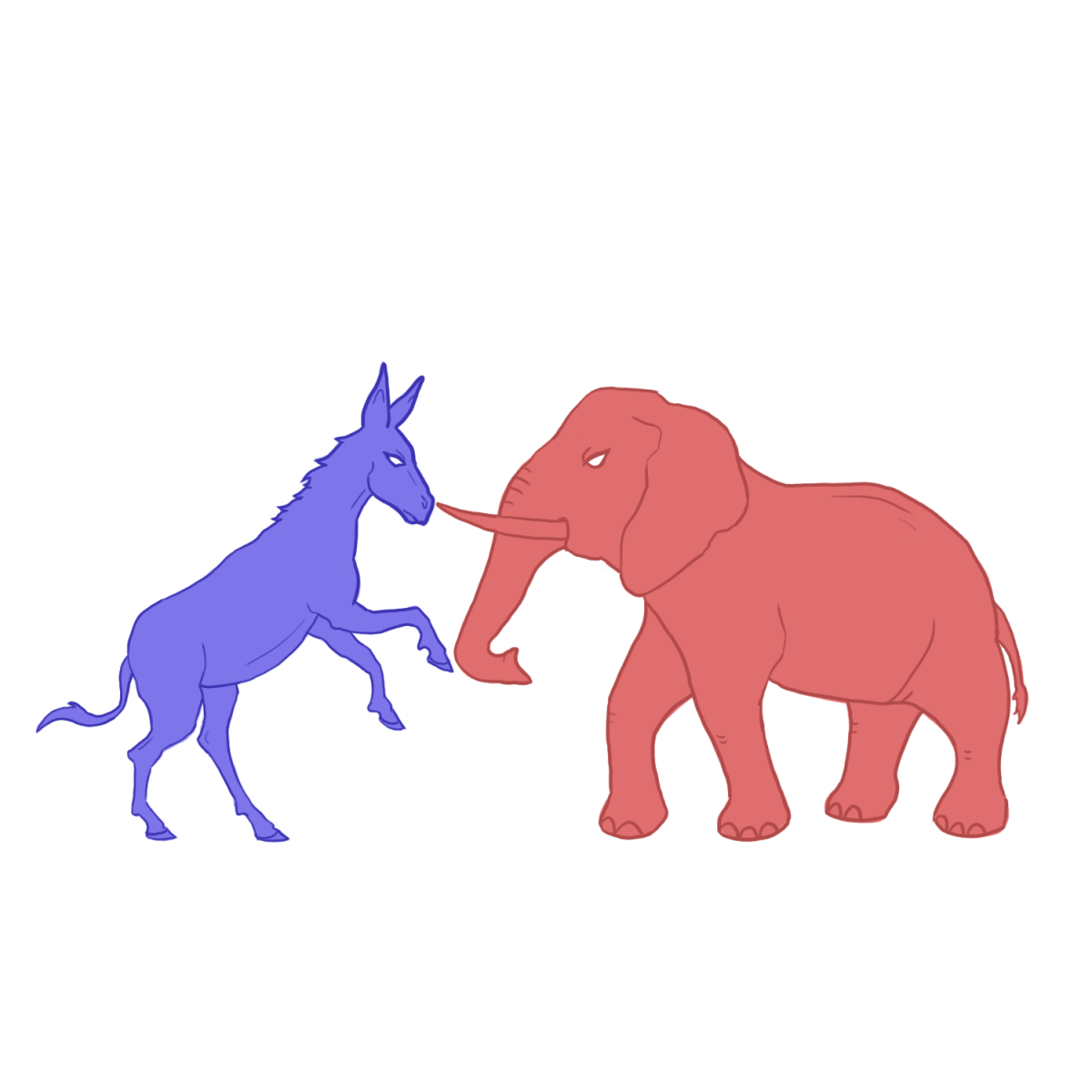Although ramps and automatic doors may appear to solve accessibility issues for people with disabilities, “The world is not designed for everyone,” recreation, parks and tourism sciences professor Chad Nelson said.
The federal Americans with Disabilities Act protects people with disabilities from discrimination and requires at least 60% of public entrances in newly constructed buildings be accessible. However, these entrances are not required to have automatic doors to be considered legally “accessible.” On Texas A&M’s campus, though, a look at the Accessible Entrances legend on Aggie Maps shows nearly every building on campus has at least one Powered Accessible entrance. Most of these entrances have a “push to open” automatic door opener.
Yet, accessibility does not equate to convenience for all.
For Ty Sutton, an agricultural leadership and development senior, not every building on campus is accessible for him, despite meeting ADA compliance. Sutton was diagnosed with spinal muscular atrophy type 2, a genetic neuromuscular disorder which causes progessive muscle weakness, at two years old and has used a wheelchair his entire life.
Automatic doors are a necessity for him to independently access buildings while in his wheelchair, but due to Sutton’s particular disability, he is not able to reach the push buttons by himself.
Usually, Sutton said he has to wait for someone to come and open the door for him, or some semesters he’s had professors who ask their teaching assistant to get the door for him, though he said this is an inconvenience for everyone involved and can sometimes take time.
“I’ve never missed a class, but I’ve definitely been late to class, several times actually, [at] different buildings,” Sutton said.
One class Sutton was often late to last fall semester due to the building’s inaccessibility was his Understanding and Developing Effective Skills for Youth Development class with professor Nelson in Room 116 of the AgriLife Sciences Building. Sutton said he usually had to wait for someone to arrive to push the accessible door button which was not accessible to him. So, in October, he reached out to his professor for help, and together the two came up with the idea to install motion sensors so anyone could motion near it, including with the movement of a wheelchair, and the door would automatically open without a need to push a button.
“I expressed my concern with Dr. Nelson and was like, ‘It’d be really great if we could share this idea throughout campus to make it more accessible for everyone,’ because, Dr. Nelson had brought up this idea, if they’re carrying a box and they can’t get in, instead of trying to elbow to hit an accessible button, it would be nice if you could just align your body with the sensor and it opens up,” Sutton said. “So, making it accessible for everyone is what we wanted to do.”
Nelson, whose two-year-old son is missing his hands due to a disability, said his personal perception of accessibility has changed, and after hearing about Sutton’s accessibility issues, he felt inspired to step in and help.
“I think I asked you, I said, ‘Can you leave the building?’” Nelson said, recalling with Sutton their initial conversation about his accessibility to class. “That’s when I learned about some of the differences with your hands, and you said, ‘No,’ and I thought, ‘Oh my gosh.’ As a non-disabled person, you think ‘accessible button,’ but it wasn’t necessarily accessible.”
So, Nelson reached out to the building’s proctor, which AgriLife Facilities and Construction Director David DeLeon serves as, to see what could be done. DeLeon, who also worked closely with Sarah Morris, AgriLife’s Facilities and Construction manager, said they first worked to understand Sutton’s disability to assess how his needs go beyond the basic ADA compliance.
“All the buildings that are built on this campus that are fairly new, and even the older buildings, abide by certain ADA and [Texas Accessibility] standards. Our buttons [at the AgriLife Sciences Building entrances] are compliant; they were done by registered architects and engineers,” DeLeon said. “However, with Ty’s disability, the button didn’t serve him right at all.”
Morris said they decided to install a motion sensor wave plate, which is a fairly new piece of technology, next to the building’s push buttons.
“That was something that I think was really exciting, was just the ability to take this existing push-button technology that we already had in place and integrate this new technology so that it’s even more accessible,” Morris said. “Sometimes that push button works to some degree to have students that need access, and then other times, if they don’t have that dexterity where they can reach in and get the button, it’s nice that we have this new technology.”
Inconvenient accessibility options are a campus-wide problem. Kyle Cox, Class of 2018, also has muscular dystrophy and said he, like Sutton, was not able to use the push buttons while he was on A&M’s campus. In 2015, Cox said he started the Open Doors project, which aimed to make the campus’s doors more accessible to people with disabilities. He worked with A&M’s facilities department, who recommended he contact a third-party vendor who works on the university’s ADA compliance, though he said he was never able to establish a relationship with the vendor and the project dropped off.
While Cox said A&M is moving forward with its accessibility, there is still work to be done.
“ADA is the bare minimum,” Cox said. “If they really want to make people with disabilities feel included, they need to go above and beyond the bare minimum.”
A standout example of a legally compliant building which is not always convenient or accessible is the new Innovative Learning Classroom Building, or ILCB. Constructed in 2020, the ILCB seemingly meets the most up-to-date ADA standards; however, the entrances pose a particular challenge to campus members in wheelchairs, Sutton said. The building entrance has two sets of double doors — but there are no push buttons in the middle.
Sutton said, like at most buildings with push buttons, he usually has to wait for someone to come and push the accessibility button or hold the door open for him when he visits the ILCB. One time, Sutton said a student held the exterior set of ILCB doors open for him, but not the second set, and since the student hadn’t hit the push button, both sets of doors didn’t automatically open and Sutton was trapped in the middle until another person came along.
“The person that opened the [first] door apparently thought I could open up the second door and shut the door almost on top of me. I was like, ‘Well, this is awesome; what am I going to do here?’” Sutton said. “This is an inconvenience. They should have three buttons … so if that happens, you can get out or get in.”
Moving forward, Nelson said he hopes campus building proctors and facilities administrators become aware of the accessibility issues some individual campus members face and are as responsive as DeLeon was to Sutton’s situation at the AgriLife Sciences Building. It is important to recognize that every person’s disability poses unique challenges, he said.
“Inclusion isn’t about making someone different feel special. It’s recognizing that everyone is different and special,” Nelson said. “One out of every four Americans have a disability. That’s a huge statistic, and if you think about it, that’s a population that any one of us can enter at any time. I’m not going to wake up a Mexican-American tomorrow, but I could wake up a disabled American tomorrow.”
Ultimately, Sutton said he hopes the new wave-plate technology will serve campus members beyond his time at A&M.
“When I leave,” Sutton said, “I know without a doubt there’s going to be other people in my same situation that’re going to come to this university who have the same needs as myself, or maybe worse, and this is going to help them be successful in college and to lead and be successful citizens in the world.”
Accessibility for all
April 14, 2022
Photo by Photo by Robert O’Brien
Agricultural leadership and development senior Ty Sutton and recreation, parks and tourism sciences professor Chad Nelson collaborated to install a wave-plate motion sensor at doors of the AgriLife Sciences Building.
0
Donate to The Battalion
$2165
$5000
Contributed
Our Goal
Your donation will support the student journalists of Texas A&M University - College Station. Your contribution will allow us to purchase equipment and cover our annual website hosting costs, in addition to paying freelance staffers for their work, travel costs for coverage and more!
More to Discover










